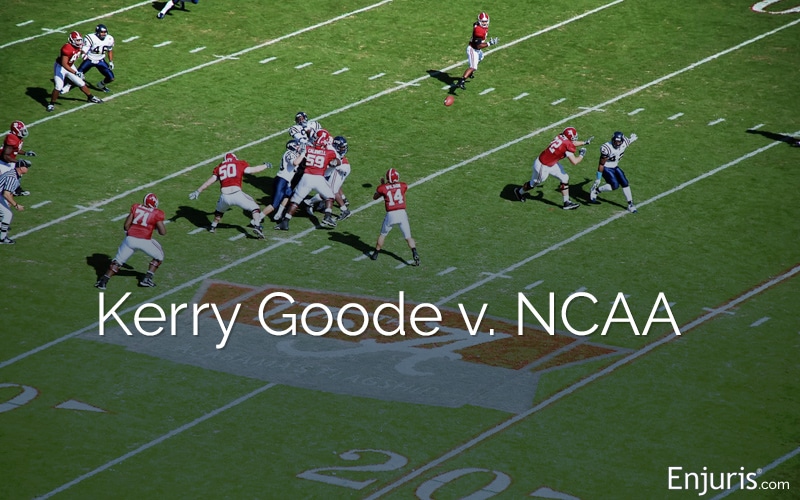
If you’re a parent of a teen, you know how hard it is to tell your child to be careful while they engage in an activity they love. You also hold your breath when they do something risky and hope they never get hurt.
But the parents of 16-year-old Caden Tellier of Alabama lived their worst nightmare last week.
Caden was playing quarterback during the third quarter of a football game at his Selma, Alabama school. He was running with the ball when the opposing team’s defender wrapped around his waist. Caden had nearly broken free when he was tackled at the ankles. He fell, landing on his elbow, but his head hit the ground, according to the Dallas County coroner. Witnesses said it was not a violent hit and it did not appear that his head hit the ground violently.
But Caden was clearly very hurt. He staggered toward the sideline and trainers administered concussion protocol as he vomited and became unresponsive. Caden died after being airlifted to UAB Hospital.
Sadly, Caden is not alone. His death follows a series of similar tragedies. West Texas high school football player Yahir Cancino died of a head injury in 2022; a player died similarly at Citrus High School in Inverness, Florida in 2021. A Kansas City teenager died just a few weeks before Caden during a preseason workout, along with an Alabama freshman who also died during practice this month; a student in Richmond, Virginia who collapsed and died during football practice; and a player near Baltimore who died after collapsing during practice on August 14th.
NCAA Football Concussion Lawsuit Filed in Macon, Georgia
A class-action lawsuit was filed in federal court in Georgia alleging that the NCAA failed to protect football players from sustaining brain damage caused by repeated head trauma.
Why do teens die from some head injuries?
According to the Mayo Clinic, a serious traumatic brain injury can result in bruising, torn tissue, bleeding, and other physical damage to the brain. This can cause long-term damage or death.
The CDC reports that youth tackle football athletes experience a median of 378 head impacts per athlete per season. Each head impact increases the risk of concussion or other serious head injury.
Who is liable for a teen sports injury or death?
Any personal injury or wrongful death claim hinges on negligence. If the victim or their representative were to file a lawsuit, they must prove that the defendant was negligent in failing to take reasonable care to avoid harm to the victim.
However, when you engage in a contact sport, especially one with tackling and a high rate of injuries like football, you assume the risk that you could become injured. It’s common knowledge that football can be dangerous, and the player and parents agree to this risk when they make the decision for the teen to participate on a team.
If the school, the league, a player or participant, or the coach or coaching staff is negligent, a lawsuit could be possible.
A school or sports organization can be liable if it fails to remedy a known, dangerous condition. This might include a hazard on the field (like a divot or rock), damaged equipment like faulty helmets or pads, slippery conditions, or other things. The organization is also responsible for following mandated safety protocols if a player is hurt. If it fails to do so, it can be liable for resulting harm.
Five tips for reducing the likelihood of a serious head injury or death in youth football
- Where possible, make flag or touch football available. The CDC reports that children are far less likely to suffer a severe injury in these types of sports than in traditional tackle football.
- Reduce the number of contact practices for a tackle football team. Practice strategy and skills but avoid tackling. The CDC reports that head impacts decreased by nearly half for high school football teams that reduced contact practices from three days a week to two or fewer.
- Enforce penalties for hitting a player in the head with a helmet.
- Teach position-specific and age-appropriate blocking and tackling. Avoid using the head to hit another player during practice contact drills. Head impacts are common during high-speed, intensive multi-player tackle drills.
- Educate players, parents, coaches and others on preventing head impacts and the long-term ramifications. This includes the dangers of head-first contact, proper inspection and use of protective equipment, best techniques for avoiding head impact, and penalties for spearing or targeting.
Taking these steps can help protect a player from traumatic brain injury, repeated head impact, spinal cord injury, and death.
Guide to Football Injuries and Lawsuits
Football injuries, including brain injuries, are so common that participation in football is declining. Find out whether you can recover damages for your injury.


